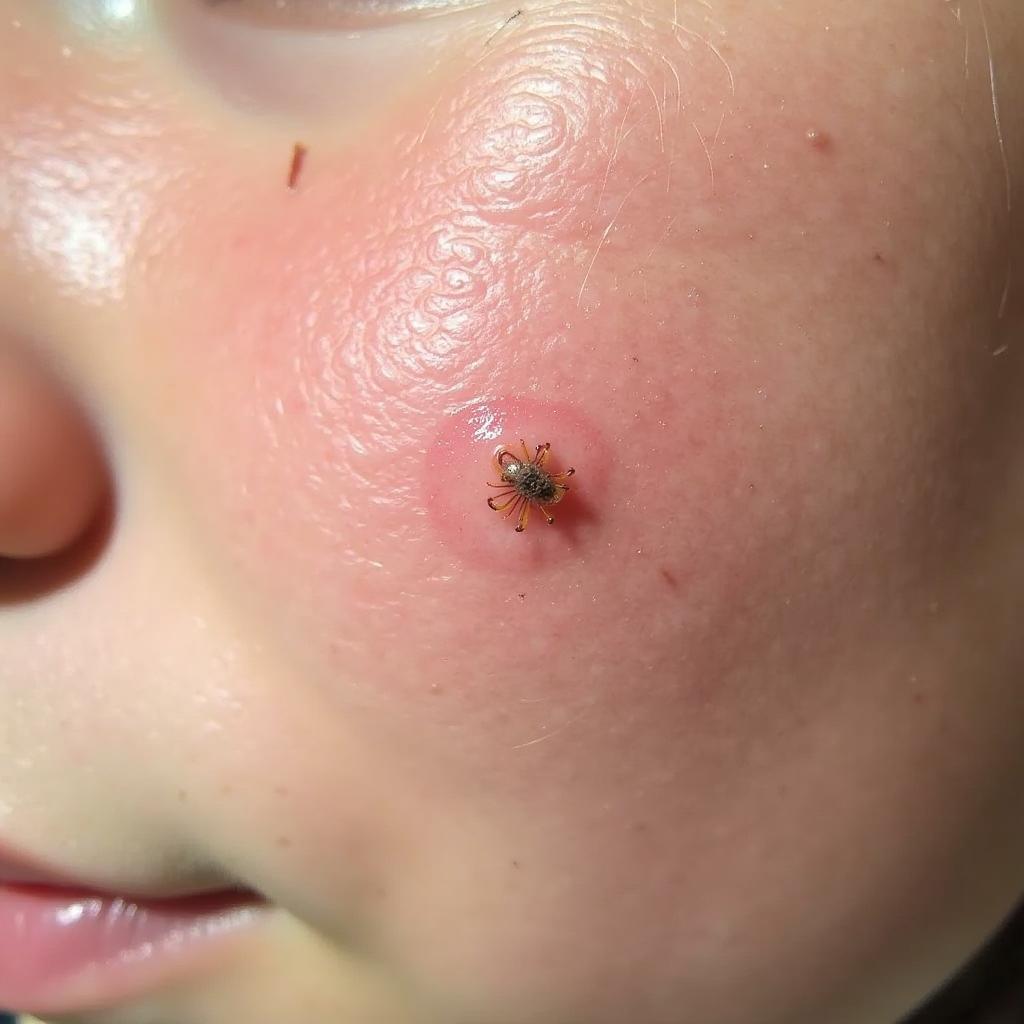
Filiform Wart vs. Skin Tag: Understanding the Differences
- AmazoniaSilva
- Tháng 1 14, 2025
- Zodiac signs
- 0 Comments
Filiform warts and skin tags are both small, benign skin growths. While they may appear similar at first glance, there are key differences in their appearance, cause, and treatment. This article will help you understand how to differentiate between a filiform wart and a skin tag, equipping you with the knowledge to seek appropriate care if needed.
What is a Filiform Wart?
Filiform warts are characterized by their unique, thread-like or finger-like projections. They are caused by the human papillomavirus (HPV) and are typically flesh-colored or slightly darker. Filiform warts commonly appear on the face, especially around the eyelids, nose, and mouth. They can also develop on the neck and other areas of the body.
 Close-up of a Filiform Wart
Close-up of a Filiform Wart
What is a Skin Tag?
Skin tags, also known as acrochordons, are small, soft, skin-colored growths that hang from the skin by a thin stalk. They are benign and not caused by a virus. Skin tags are most commonly found in areas where skin rubs against skin, such as the neck, armpits, groin, and eyelids. They can also appear under the breasts or in other areas of the body.
Key Differences between a Filiform Wart and a Skin Tag
Understanding the key differences between filiform warts and skin tags can help you identify which one you might have. These differences include:
- Cause: Filiform warts are caused by HPV, while skin tags are not.
- Shape: Filiform warts have a thread-like or finger-like appearance, while skin tags are smooth and rounded, often on a stalk.
- Texture: Filiform warts can be rough and irregular, while skin tags are typically soft and smooth.
- Location: Both can occur on the face and neck, but skin tags are more commonly found in areas of friction.
Filiform Wart vs Skin Tag: Treatment Options
Treatment options vary depending on whether you have a filiform wart or a skin tag. Consult a dermatologist for an accurate diagnosis and personalized treatment plan.
Treating Filiform Warts
Filiform warts can often be treated with topical medications, cryotherapy (freezing), or surgical removal.
Treating Skin Tags
Skin tags can be removed through various methods, including cryotherapy, surgical excision, or ligation (tying off the base of the skin tag with a surgical thread).
When to See a Doctor
While both filiform warts and skin tags are typically harmless, it’s always best to consult a dermatologist for a professional diagnosis. This is particularly important if the growth is changing in size, shape, or color, or if it’s causing discomfort or bleeding.
Conclusion
Understanding the difference between a Filiform Wart Vs Skin Tag is crucial for proper diagnosis and treatment. While both are benign skin growths, their distinct characteristics help distinguish them. If you have any concerns about a skin growth, always consult a dermatologist for personalized advice.
FAQ
- Are skin tags contagious? No, skin tags are not contagious.
- Can filiform warts spread? Yes, filiform warts can spread to other parts of the body or to other people through direct contact.
- Are skin tags painful? Skin tags are typically painless unless they become irritated.
- Do filiform warts itch? Filiform warts can sometimes itch or cause slight irritation.
- Can I remove a skin tag myself? While there are at-home removal methods, it’s best to consult a dermatologist for safe and effective removal.
- How can I prevent filiform warts? Practicing good hygiene and avoiding contact with warts can help prevent the spread of HPV.
- Are there any home remedies for skin tags? While some home remedies exist, their effectiveness varies and may carry risks. Consult a dermatologist for professional advice.
Scenarios:
- Scenario: A small, flesh-colored growth appears on your eyelid. It’s slightly bumpy and doesn’t hurt. Question: Is it a filiform wart or a skin tag?
- Scenario: You notice several small, soft growths under your arm. They are skin-colored and hang from the skin. Question: Are these skin tags?
Related Articles:
- Understanding Skin Conditions
- Common Skin Growths and Their Treatment
Need help? Contact us at Email: [email protected], address: Fifth Avenue, 34th Floor, New York, NY 10118, USA. We have a 24/7 customer support team.

